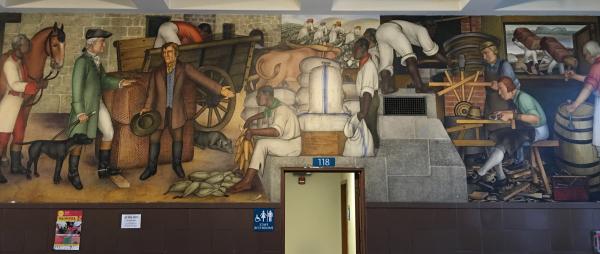By Mya Dosch
Public art—and its role in upholding white supremacy—continues to capture public attention in the post-Charlottesville United States. This year, the San Francisco Board of Education debated the fate of the 1936 Life of George Washington murals by Victor Arnautoff (1896-1979) in the stairwell and lobby of that city’s George Washington High School. Art history classrooms should be grounds where students engage with these most current debates over the role of public art. Here, I outline an activity for two or three class sessions (approximately three hours) on the Arnautoff murals that aims to both address the complexity of recent debates and create space for dialogue across differing opinions. It also addresses students’ affective responses.




